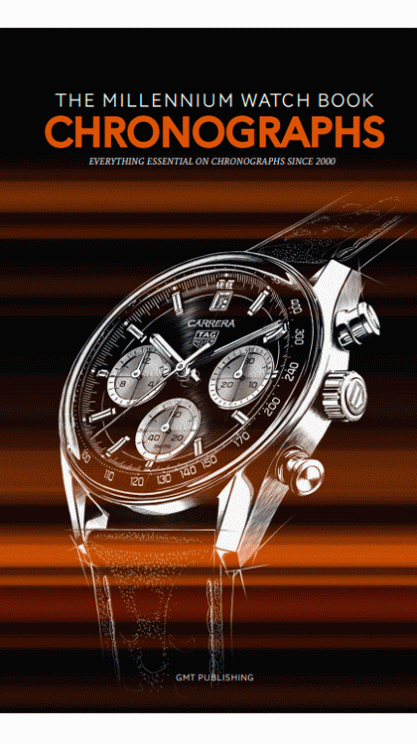Before creating a new complication, Patek Philippe asks itself a simple question: is the Manufacture able to add something new? While the question may appear obvious, the answer may be much less so: when you’ve been around since 1839 and complications are your speciality, everything, or almost everything, has already been done…
The chronograph was no exception to this rule, but the brand didn’t have one measuring tenths of a second in its standard collection. This might come as a surprise. After all, the feature doesn’t pose any particular problem. In theory, all it takes is simply increasing a chronograph’s frequency to 36,000vph, the mathematical equivalent of one tenth of a second, a technical exercise that’s not very hard to achieve. Patek Philippe had indeed already done so in the 1930s, well before Zenith’s El Primero took the idea mainstream in 1969.
A question of readability
It thus wasn’t the technical aspect that caused Patek Philippe to hold back for such a long time. The issue was more to do with the readability of the resulting precision: measuring tenths of seconds involves installing a jumping hand that makes ten jumps a second. That’s doable, but the energy consumption and friction are colossal, and the resulting scale would not be very easy to read. Another option is to adjust the rate, as Zenith did in 2010, with the chronograph hand completing one revolution every ten seconds and a flange marked with a ten-second rather than a 60-second scale, making it that much more readable.
However, Patek Philippe chose another route for its 5470P. The designers decided to create two independent chronograph mechanisms: one for the seconds and the instantaneous 30-minute counter, the other exclusively for tenths of a second.
This means that the 5470P has a first hand that completes one revolution per minute, displaying the seconds in traditional fashion. The other, red-lacquered hand completes a revolution once every 12 seconds, passing over 12 sectors, each divided into tenths, as it does so. Users can easily read off elapsed seconds using the ‘pearl’ hour-markers and tenths of seconds on the outer railtrack scale, starting at the last red marker. The idea is simple, elegant and clever.
So many patents
This kind of display requires high-flying mechanical engineering beneath the dial — not least because for this model, Patek Philippe set itself the task of its chronograph measuring of tenths of seconds for 30 consecutive minutes with perfect precision, as well as remaining within acceptable dimensions (29.6mm in diameter and 6.96mm thick).
To pull off this feat, the CH 29-535 PS 1/10 movement includes the Oscillomax escapement, with its 17 patents and extensive use of silicon. The first use of the latter was in 2005, for the first escape-wheel in Silinvar, followed by the hairspring in 2006, the escapement in 2008, and finally the balance-wheel in 2011, completing the Oscillomax assembly. This was used that same year in a limited-edition perpetual calendar, the 5550P; but the 5470P was the first time Patek Philippe used the full Oscillomax in one of its standard collections.

Patek Philippe 5470P Monopusher Chronograph
CASE: Platinum, diamond at 6 o’clock, water-resistant to 30m
DIMENSIONS: 41mm diameter, 13.68mm thick
MOVEMENT: Hand-wound CH29-535 PS 1/10 calibre, 10th of a second monopusher chronograph, (central seconds hand, second central hand for tenths of seconds, instantaneous 30-minute counter, 396 components, 36,000vph, 48-hour power reserve (excluding chronograph use)
FUNCTIONS: hours, minutes, small seconds display, chronograph
DIAL: blue, applique grey gold Breguet Arabic numerals
STRAP: calfskin leather with embossed textile motif, red topstitching, folding clasp
LAUNCH YEAR: 2022
This year GMT Magazine and WorldTempus have embarked on the ambitious project of summarising the chronograph since the year 2000 in The Millennium Watch Book - Chronographs, a big, beautifully laid out coffee table book. This article is an extract. The Millennium Watch Book - Chronographs is available in both French and English here.









